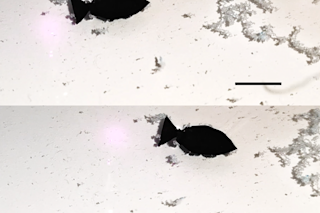http://www.youtube.com/watch?v=P4bxRj-BjFg Sandfish lizards jostle back and forth, bending their bodies into a slithery S-curve to swim through the sands of the Sahara. Like scorpions and several other native desert species, they long ago mastered the difficult art of moving through the myriad grains of a sandy expanse to escape predators or the blistering African sun. And now physicists are close to cracking their secrets. Daniel Goldman's team has been trying to figure out just how the sandfish lizards do it for years now; in 2009 they built a robot to simulate the creature's slithering motion. This time, for a study in the Journal of the Royal Society Interface, the scientists tried to model the physics of an animal knocking around so many grains of sand and see how the lizards burrow with such efficiency.
The team found sine-wave-like movement allows the lizard, and their robot, to push forward in sand, ...













